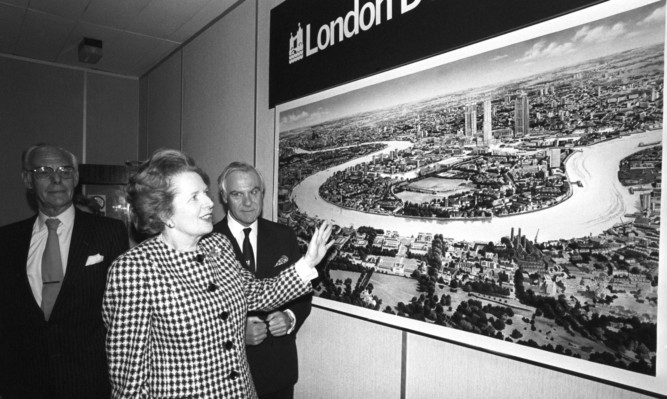There are three great lies in life.
One is “The cheque’s in the post”. The second is “Darling, I’ll respect you in the morning”, and the third is “I’m from the London Treasury and I want to help Scotland!”
Twenty five years ago, ground-breaking research by award-winning journalist George Rosie published under the banner “Scotching the Myth” exposed the truth that much of supposed UK-wide public spending is in reality a subsidy ramp for London and the south of England.
The vast expenditure lavished in and around London in the 1980s and 1990s on a host of infrastructure projects such as the redevelopment of docklands, the Jubilee line extension, and concentrating defence spending, procurement, and the civil service firmly in the south was presented by proponents of the Union as benefiting all of the UK equally, despite the clear economic advantage given to London.
The bulk of this type of spending was omitted from all official accounts of “identifiable public spending” and it still is. Meanwhile, public spending in Scotland was routinely described as a “subsidy” notwithstanding the £300 billion generated from North Sea oil taxes and the fact that Scotland continues to generate more tax per head than the rest of the UK, as it has for each and every one of the last 30 years.
Such is the language of political control. I’m a big fan of infrastructure spending to boost the economy, north and south of the border. And I’m also a fan of London as a buzzing and diverse capital city.
But I’m also a big fan of fairness and balance and successive Westminster governments have failed lamentably to spread the benefits of infrastructure investment to Scotland and other areas of the UK, while all the time denying that London receives preferential treatment.
And if Scotland gets short-changed then the north of England gets taken to the cleaners. A report last year by the Institute of Public Policy Research showed that in terms of all infrastructure spending, London received a mind-boggling £5,426 compared with £223 per head in the north east of England!
But I predict that airports will be the next row over the concentration of taxpayers’ money in London to the potential detriment of Scotland.
A UK Government-appointed commission, chaired by Sir Howard Davies, was charged with recommending the site for a new runway in London. Earlier this summer, it chose expansion at Heathrow despite a massive cost to the taxpayer.
Like so much else of London-centric policy not least energy, as the threatened closure of Longannet shows Scotland is facing all of the pain and none of the gain from a third runway at Heathrow.
Our priority should be to protect Scotland’s position and boost direct Scottish flights to and from international destinations for the benefit of travellers, tourism and our exporting industries.
However, if new capacity is needed in London then at least Heathrow’s rival Gatwick have pledged they would build a new runway there at no cost to the public purse and guarantee proper access to the capital from Scottish airports.
The Heathrow option is the worst of all worlds taxpayers, including in Scotland, would have to stump up over £5 billion of construction costs to create a virtual aviation monopoly of international connectivity.
And just like other London-based spending, our friends in the Treasury would deem public cash for Heathrow as a “UK-wide strategic project” in other words, no Barnett consequential money to invest in infrastructure in Scotland, Wales or Northern Ireland.
A new runway in London is some years away, and right now we need the transfer to Scotland of Air Passenger Duty as agreed through the Smith Commission.
Scotland’s airports are crying out for this power, because cutting APD will help us attract more direct international flights, more direct access to global markets, and more visitors coming directly to Scotland reducing the need for flying via London altogether.
Not for the first time, the UK Government is obsessed with London while Scotland’s focus should be flying high and handsome to the wider world.
